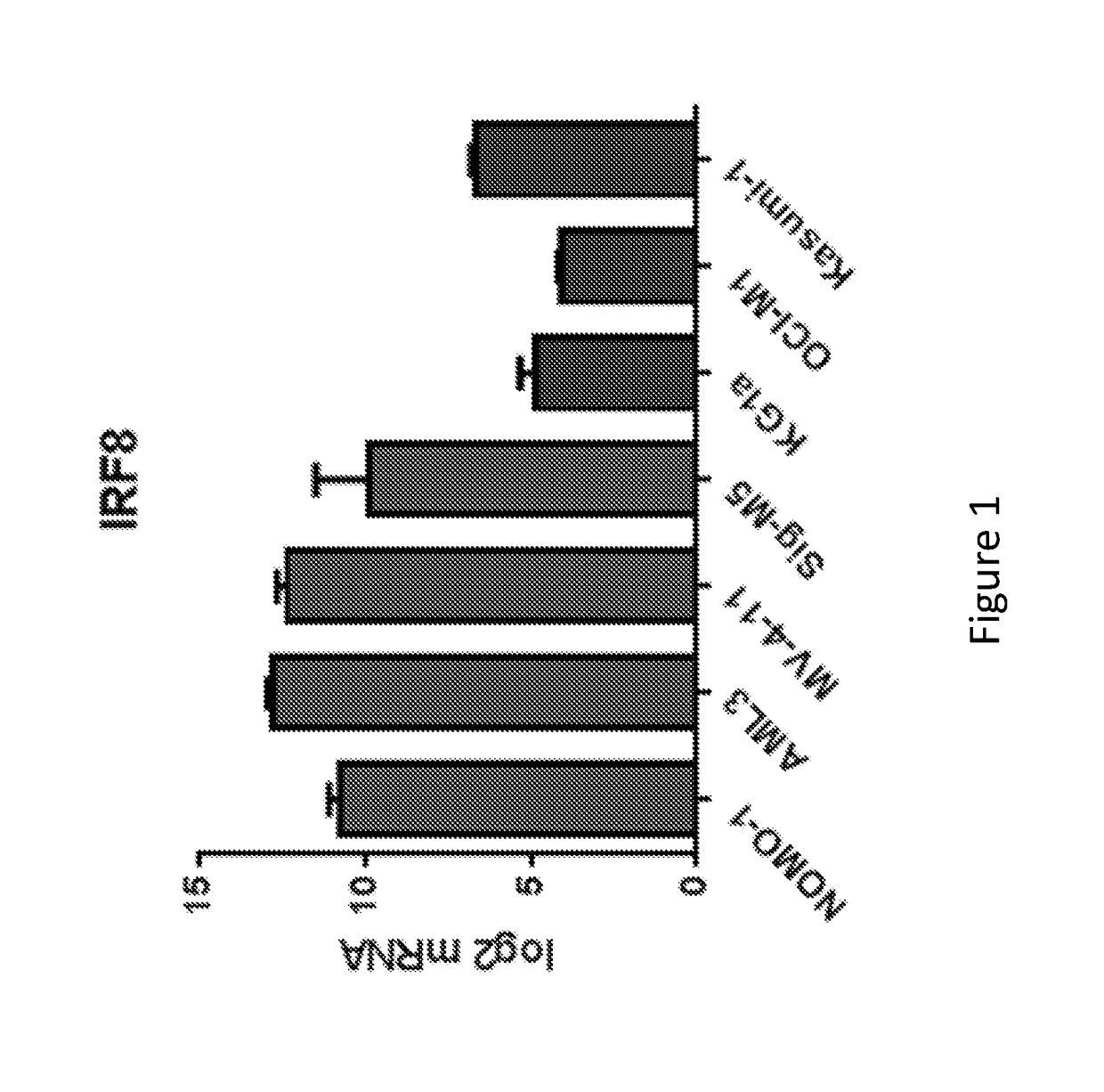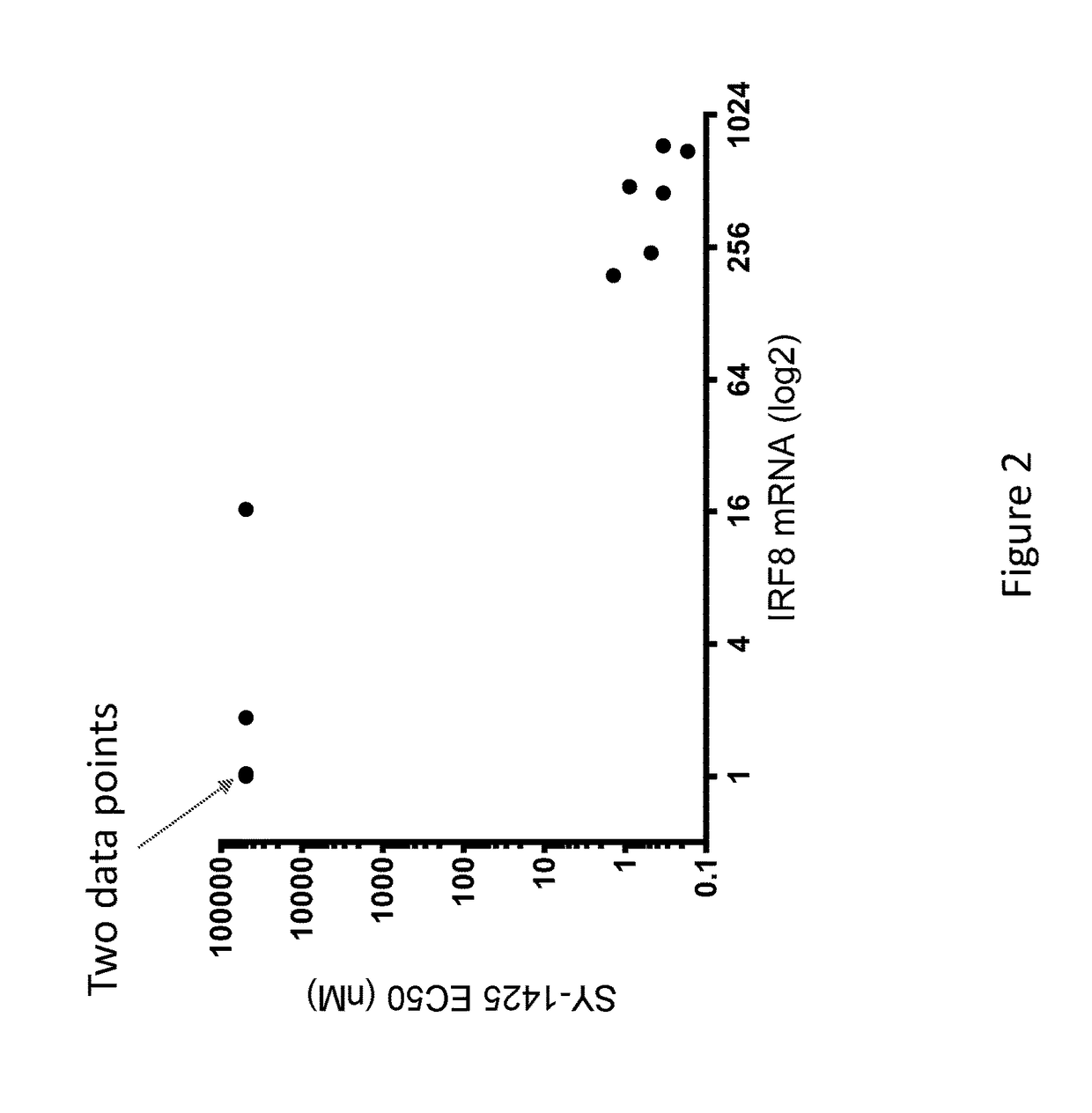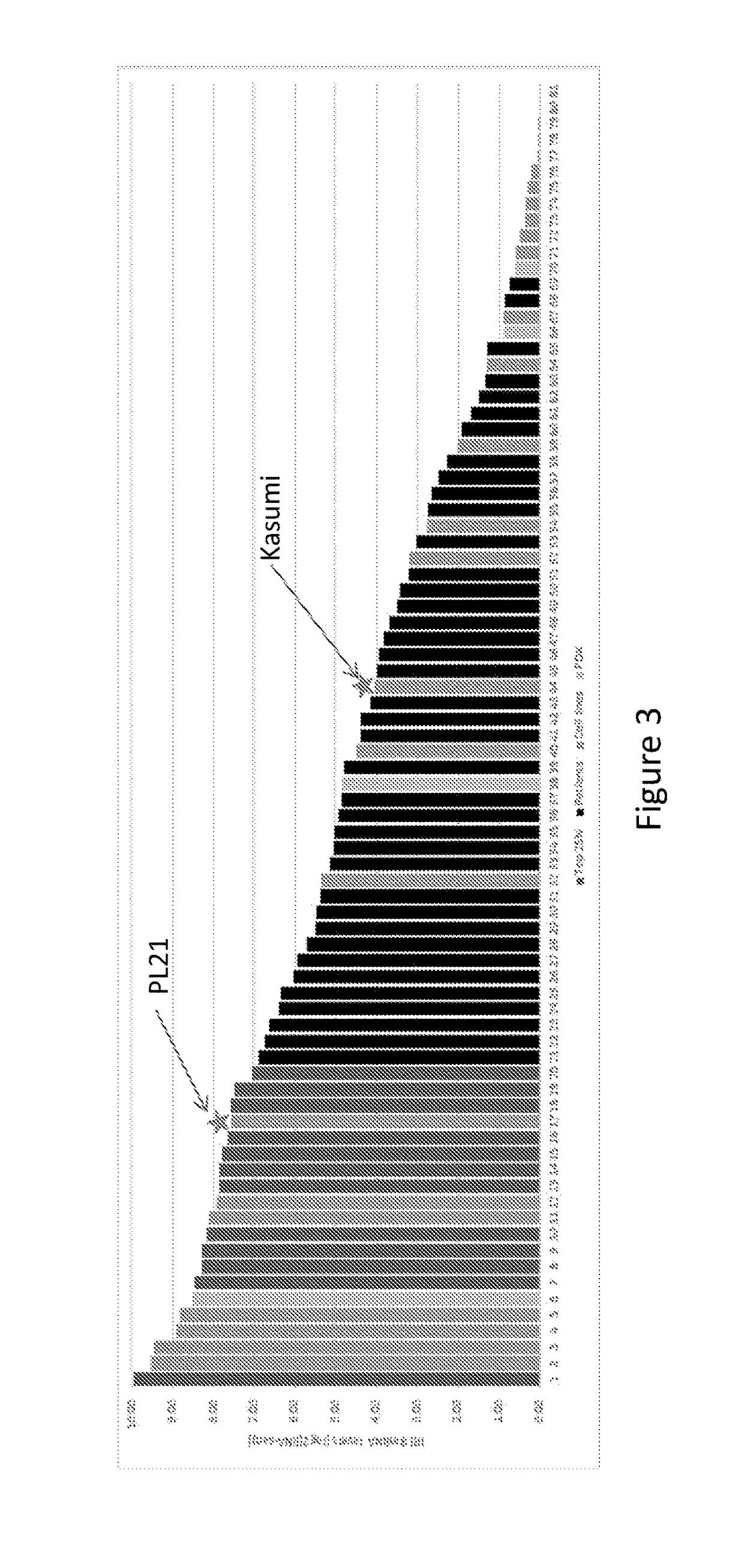Methods of stratifying patients for treatment with retinoic acid receptor-α agonists
a technology of retinoic acid receptor and patient stratification, which is applied in the direction of biochemistry apparatus and processes, medical preparations, organic active ingredients, etc., can solve the problems of specific agonists, limit the therapeutic use of retinoids, and have not been approved
- Summary
- Abstract
- Description
- Claims
- Application Information
AI Technical Summary
Problems solved by technology
Method used
Image
Examples
example 1
Levels in Non-APL AML Cell Lines Correlate with Responsiveness to a RARA Agonist
[0188]We previously tested several AML cell lines for sensitivity to tamibarotene and demonstrated that sensitivity correlated very well with each of RARA super enhancer strength, RARA super enhancer strength ordinal and RARA mRNA level. This was done as described below.
[0189]On the day of the experiment, cells were homogenized using Accumax (EMD Millipore), counted, and adjusted to 60,000 cells / mL in appropriate growth media. Using a Biotek EL406, 50 μl of cells were distributed into white (ATPlite) or black (CyQuant) 384-well plates (Thermo). Cells were returned to 37° C. incubator to allow adhesion. After three hours, compounds were added to plates using a 20 nl 384-well pin transfer manifold on a Janus workstation. Stocks were arrayed in 10 point quadruplicate dose response in DMSO stock in 384-well compound plates. After addition of compound, plates were incubated for five or ten days in a 37° C. in...
example 2
tion of IRF8 mRNA Threshold Values for RARA Agonist Treatment
[0201]The AML cell line results suggest a cutoff value of between 15.5 and 190 TPM (i.e., between log2(4.03) and log2(7.57) in the RNA-Seq assay. We chose a population of AML patient samples (kindly provided by Stanford University) in order to examine the distribution of IRF mRNA levels and to determine prevalence cutoffs based on the cutoff values. We added to that population AML cell lines and then generated a rank-ordered graph. FIG. 3 shows that rank-ordered distribution of IRF8 mRNA levels in the combined patient sample / AML cell line population. We determined that a prevalence cutoff of 25% corresponded to an IRF mRNA value of approximately log2(7).
example 3
on of IRF8 mRNA and RARA mRNA Levels
[0202]We next compared IRF8 and RARA mRNA levels in AML cell lines and patient population to determine correlation. FIG. 4 shows that some cell lines that responded to tamibarotene have relatively low RARA mRNA, but a high level of IRF8 mRNA. FIG. 5 shows that a subset of patients, too, demonstrates high IRF8 mRNA levels, but relatively low RARA mRNA levels and vice versa. This supports the idea that measuring both IRF8 and RARA mRNA in a patient and selecting that patient for treatment with a RARA agonist, such as tamibarotene, if either mRNA level is above a threshold value may optimize the treatable patient population.
PUM
| Property | Measurement | Unit |
|---|---|---|
| threshold | aaaaa | aaaaa |
| time | aaaaa | aaaaa |
| time | aaaaa | aaaaa |
Abstract
Description
Claims
Application Information
 Login to View More
Login to View More - R&D
- Intellectual Property
- Life Sciences
- Materials
- Tech Scout
- Unparalleled Data Quality
- Higher Quality Content
- 60% Fewer Hallucinations
Browse by: Latest US Patents, China's latest patents, Technical Efficacy Thesaurus, Application Domain, Technology Topic, Popular Technical Reports.
© 2025 PatSnap. All rights reserved.Legal|Privacy policy|Modern Slavery Act Transparency Statement|Sitemap|About US| Contact US: help@patsnap.com



